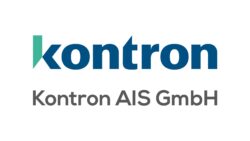As rapidly as the performance and tasks of electronic components are developing, digitalization is often slow to make its way into the production of printed circuit boards. At the same time, however, customers are demanding ever smaller batches of up to lot size 1 and as much production data as possible in parallel. Würth Elektronik has introduced a Manufacturing Execution System (MES) for production control in PCB production, thus laying the foundation for further networking in the IIoT. Because software decisions are always a matter of trust, Würth Elektronik chose FabEagle® from Kontron AIS, a solution from a proven partner.
The challenge: Manufacturing data as part of the product - meeting customer requirements and gaining clarity about own processes
Changing horses in the middle of a race is not always wise, but when the race is interrupted for whatever reason, it is a good opportunity for modernization measures. This is what happened at Würth Elektronik when large parts of the machinery had to be re-procured after a fire. At the same time, the company took a big step toward digitization and networked production with an MES. Setting up an MES means, above all, asking a lot of questions and knowing all the players in production just as well as the desired insights that are expected from the data. Order data is relevant for the ERP system, production control is about work schedules and material flows, and machine status data, alarms, and process data are needed to evaluate productivity. Only with a solid foundation, as which the MES should be understood, can networking across sites or the combination of local MES and cloud-based services, for example for maintenance planning, succeed in further steps. Würth Elektronik manufactures printed circuit boards at three locations; considerable synergy effects can be expected here.
In addition, the product itself is anything but trivial to manufacture. A printed circuit board is produced in about 30 production steps, multilayer structures may well require twice that number. The material tracking is further complicated by the pressing processes, which cause the markings to disappear again and again. In addition, each PCB is an individual product; production takes place according to the customer’s layout specifications. In addition to the product, customers increasingly request manufacturing data, including a digital twin of the PCB, for simulations prior to actual installation. Without MES, this is a costly to unsolvable additional task.
The MES integrator is now faced with the task of deciding which data should be collected at which point and what their benefit should be. Kontron AIS, as the provider of the MES software, has the claim to support the operators in the integration of all interfaces down to the control level. A main focus is on open interfaces so that customers can later integrate additional equipment or processes.
In addition to the purely technological requirements, it takes trust in the MES integrator above all to successfully introduce an MES. Many departments are involved in production control, and careful coordination is required to make the right decisions and create internal acceptance for the project. Not least because the communication options of each machine and the interfaces used are largely individually dependent on the manufacturer. Standards such as OPC UA are still far from being the norm everywhere. All points must be integrated into the company’s infrastructure.
In order for the MES to be more than a mere data distribution point, clear questions are needed. In most cases, it is not the (non-)existence of the information that is a problem, but the lack of clarity about what one wants to read from the data. For Würth Elektronik, one of the decisive factors was which alarms are recorded at all and how they are evaluated. This information serves as the basis for internal process optimization and increasing the availability of the systems.
The solution: A loose grip on interface diversity - the open, flexible MES
A good MES offers a lot of different interface standards. At Kontron AIS, the following applies: “we support our customers in interface integration even for very special, in this case semiconductor-specific interface protocols”. Data integration is the first added value offered by the MES. The FabEagle®MES used at Würth Elektronik manages all information in a relational database and links it for monitoring and controlling production and for providing quality data to end customers.
In order to implement such a project in manageable sub-steps, the first step is a proof of concept (POC) to test the solution in a specific manufacturing area. In this case, Würth Elektronik has chosen the production line for solder resist coating. The POC as a pilot project also serves to determine which data are already available at all, from which sources they originate, and which results are desired overall. Only when the functionalities have been defined in this way do we move on to the questions for the analysis and further processing of all the information. FabEagle®MES uses a web client for the visualization, so that data access is flexible as possible for all operators.
Würth Elektronik operators use the web client to access the individual MES function modules. These include, for example, order and work plan management, material tracking and reporting on machine statuses, alarms and key production figures. First, the machines provide status data, alarms and throughput in order to analyze correlations in the MES and identify bottlenecks. Later, this data is used to create new KPIs for production. In every implementation, Kontron AIS has taken into account further implementation and connection to other process levels and offers also the appropriate platform for the path to hybrid and cloud-based solutions. The foundation for any success is the good structure that the MES brings to the variety of data. Thus, subsequent steps result almost by themselves.
The result: Knowledge instead of gut feeling – data flow in the MES accelerates processes and reduces errors
The introduction of the MES has brought huge progress for Würth Elektronik in a challenging situation – the procurement and commissioning of several new machines at the same time. The solid data basis, which has replaced gut feeling in the assessment of machine conditions, ensures the really appropriate machine configuration. The pilot project on the solder resist line has convinced as a proof of concept (POC). For any project, it is important to convince internally and win supporters for the idea (and the investment).
With quickly available data, the flow of information and error analysis also accelerate; downtimes are correspondingly shorter. The introduction of an MES brings at least 10% more plant availability, and with FabEagle®MES from Kontron AIS, it can be observed that the frequency of errors decreases by 50%. Faster, safer and with all the necessary information: this is how manufacturing with MES is perfectly prepared for further networking in the IIoT.
The topic of sustainability with all its facets is also becoming increasingly important in PCB production. In order to make reliable statements here, the first thing that is needed is precise knowledge of the actual energy and raw material consumption of the individual stations and of the entire production: individually processed and displayed by the MES.









